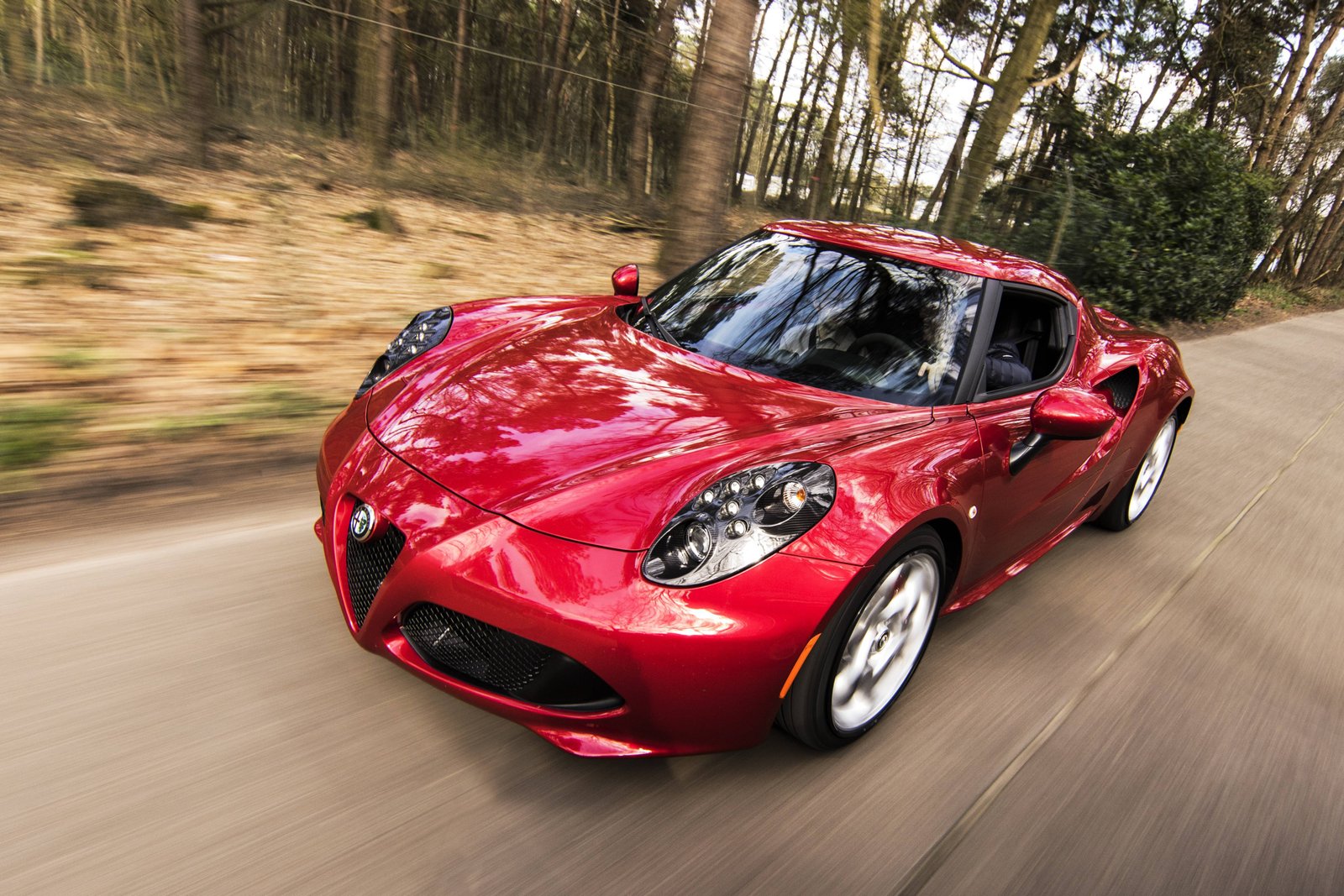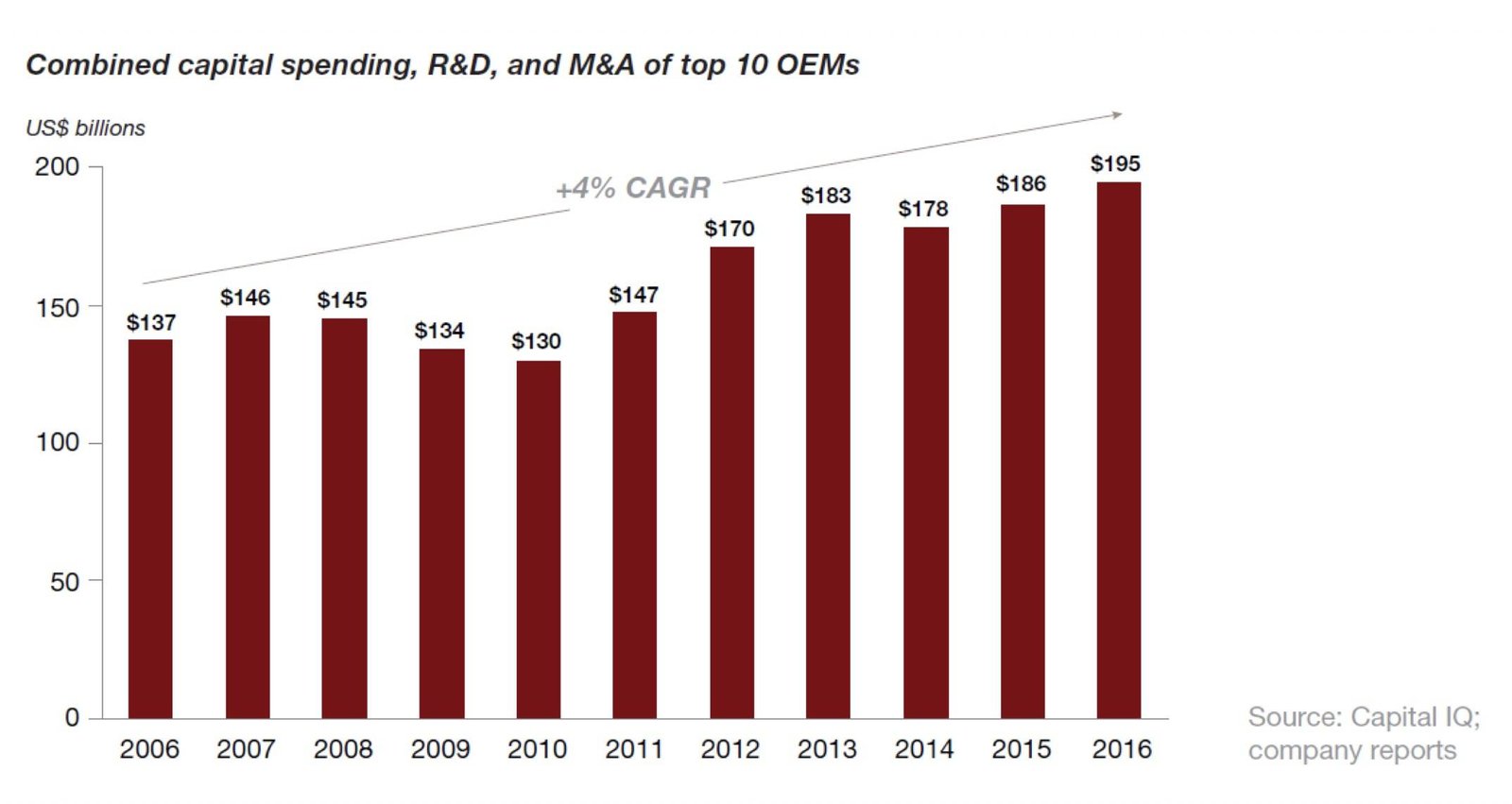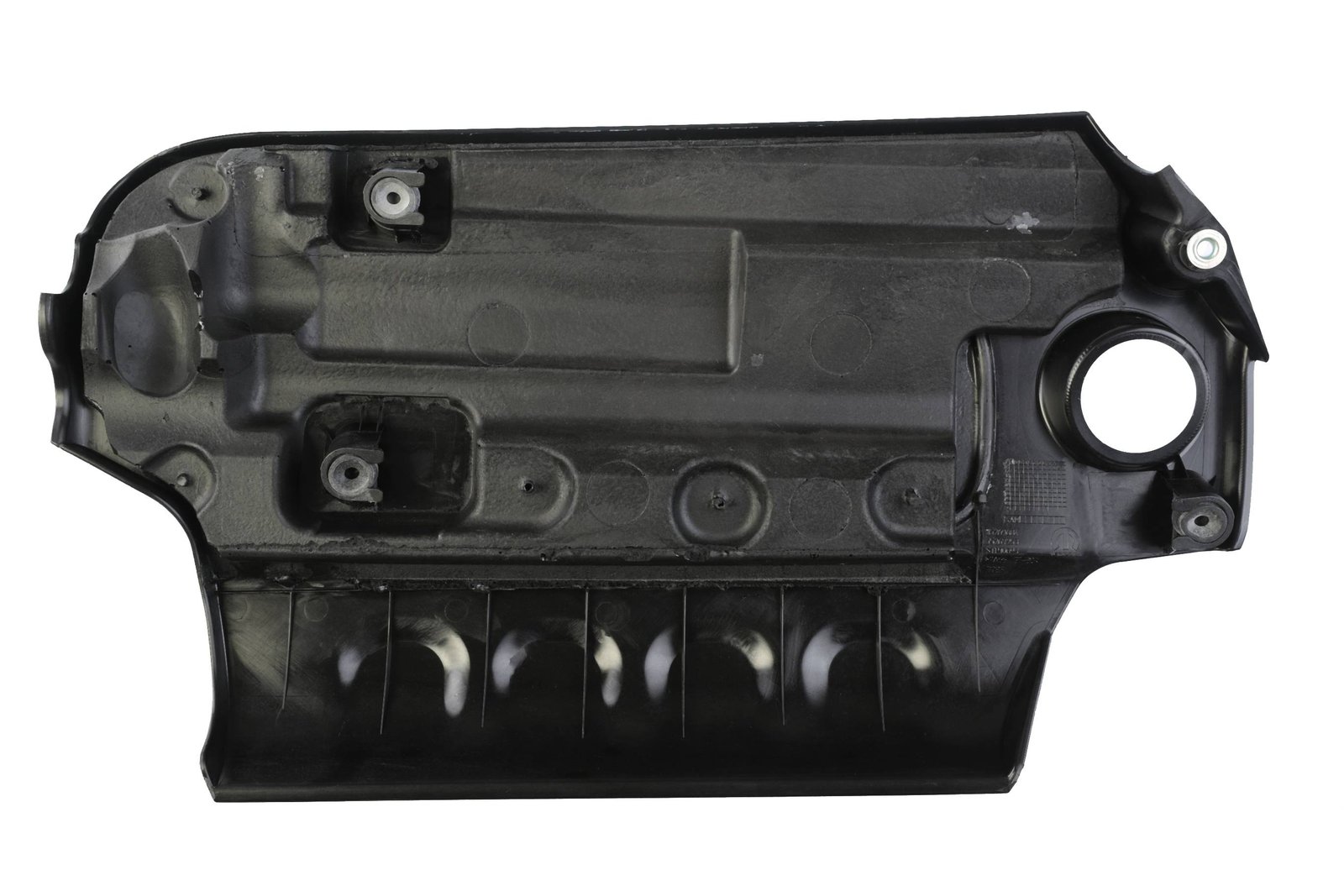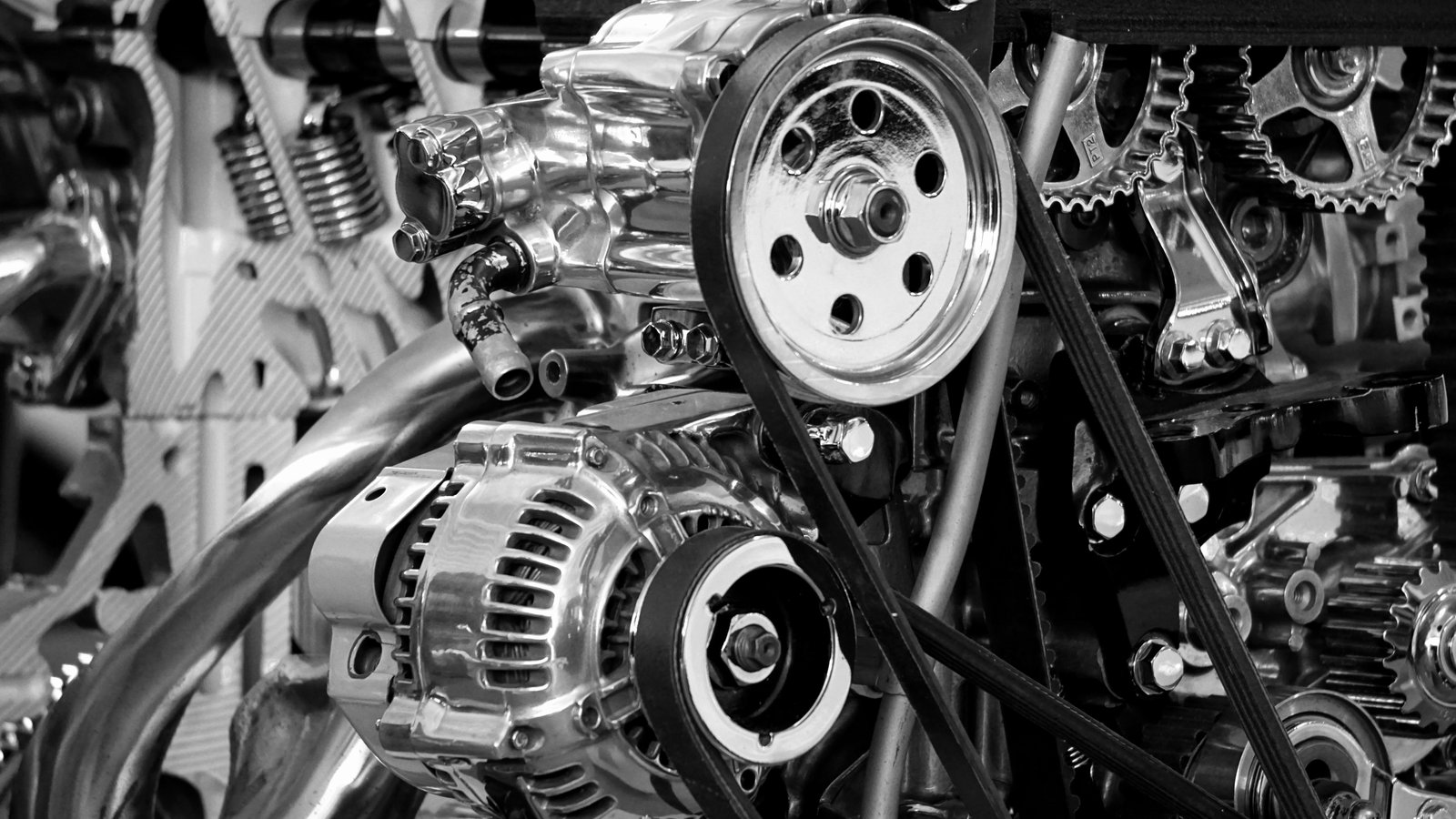Our blog
5 technologies that are about to change the Automotive sector
5 technologies that are about to change the Automotive sector
5 technologies that are about to change the Automotive sector
…and the essential reason why should the focus be on them now.
I decided to write this article after a meeting with my engineers of our Innovation in Engineering department.
Taking stock with them, came up 5 fundamental technologies that in the near future will change the face of the automotive sector.
A sector frequently overlooked.
If you are an engineer, you know exactly what I am talking about.
In recent years you, as I, have witnessed with our own eyes the changes happen at the speed of light (and we have contributed as well, to some of these changes).
And the greatest challenge has been to react to these changes with vigour and skills, succeeding in give us room among the pernicious obstacles in our way.
Quite often we have seen companies shook up, for not being able to be on top of what’s current.
Unfortunately these companies made a mistake, a fundamental flaw, and I must confess that we in SAPA nearly came close.
The mistake is to underestimate the future, focusing only to what’s going on right now.
But I ask you to take a crucial step back.
Just hear me out, because it’s very important, later on in our reasoning you will exactly understand why.
While watching this blank paper gradually filling in with words, around me there is a deafening silence, broken by my own hands on the keyboard.
This silence most likely impress me because moments before I was in a much more “musical” and noisy place, namely our factory, where every day we produce around 110.000 ready to use car components.
Moving along the long areas of our Arpaia’s plant (province of Benevento), I was looking up the engineers who, like the conductors of an orchestra, were incessantly leading a symphony performed by robots, instead of musicians.
Only a few years ago, all of this wouldn’t have been possible.
And none of this would have happened if we had been unable to intercept the changes that soon thereafter would have invaded our world; And if we had been unable to train our engineers.
The truth is that the automotive sector has dramatically changed.
But it’s changing even today. Now.
The main problem is that this is all happening so much faster than we thought it would, for a number of reasons:
- The repeated promises which are swamping the automotive market, from autonomous cars to the electric ones;
- The overly stringent guidelines on environmental protection…raise ever-higher expectations in those interested in buying a new car.
And now car companies are battening down the hatches. Two are the key themes to be aware of, always:
- Innovation and performance
- Cost reduction
We are now facing a new scenario: more technologies mean more costs.
I guess you know the drill.
And we are trying to overcome these issues together with you.
I must confess you: the work carried out was a lot; A research work, an intellectual work. I can’t tell you how much we have hit our head against a wall, trying to find the right technologies.
We wanted to be ready to come up, together with you, with a solution for the future, and for present as well.
But it’s not enough.
Paradoxically this catching-up process for new technologies has created higher expectation in the client, but often this expectation is not yet sustainable, because far too costly.
This has led to an increase in sales during these years, but towards ever lower margins.
Why automotive companies are selling more cars…but the profit gets shorter?
Now, please, just hear me out, since it’s a complex issue, but it’s worth being understood, because it will answer many of your (and my) problems.
I do want to share this data with you, not because I am self-opinionated, but because I know this is a problem which is affecting us all and for which we must find a solution together.
Only in 2016, all cars sold in the world had been 88 million, with an increase of 4,8% in sales, compared to the previous year. This fact convinced many players (including us, at the beginning) to believe that our market is safe, on the increase, and relatively risk-free.
But we were wrong, maybe because we’ve been too wrapped up in change, without figure out how to bear the COST of this change.
In fact, two clear financial indexes explain how the automotive industry is at not inconsiderable risk:
- Index #1 – The average financial return of investors: this graphic shows in RED the average financial return of 100 companies on other sectors, from 2006 to 2016. While in PINK the average financial return of the 10 major companies in the automotive sector, US market.
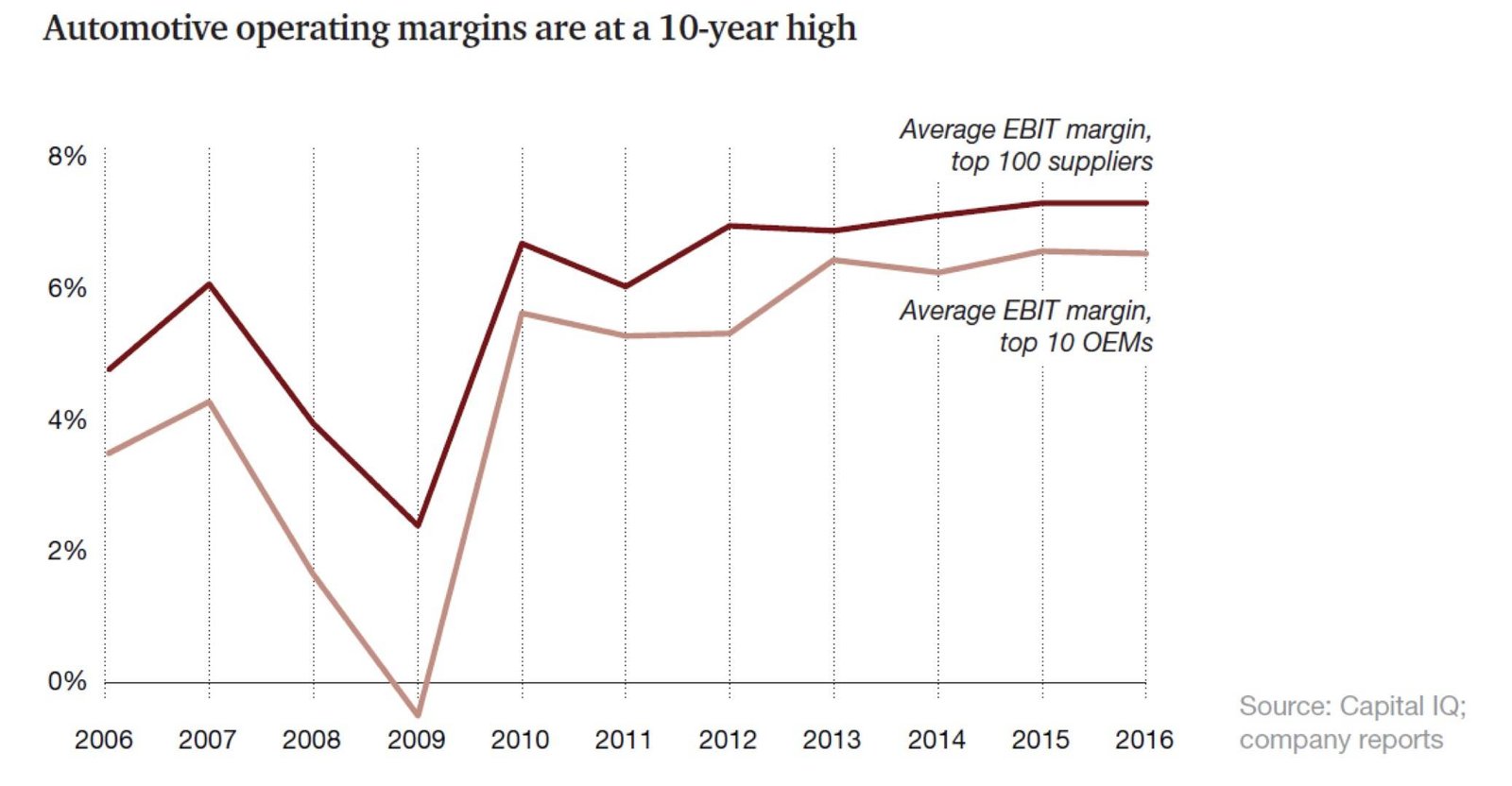
If in 10 years the incomes difference from investments compared to other sectors has always been lower, and the future appears to be the same for long, why the investors should continue to invest in car market?
- Index #2 – The production costs grow larger:
The graphic shows how over 10 years the investments have gradually increased, in order to be competitive and offer to client a better and better experience.
The present is an increasing investment, in the face of a declining financial return.
Hearing normal people using words like “autonomous driving, electric cars, automatic brakes” is increasingly common, showing how the market demand is for ever more innovative cars.
The materials necessary for achieving these results are more and more expensive and the technicians to produce the suitable technology are becoming increasingly rare as well and, moreover, they prefer new and challenging sectors as robotics and coding, rather than car industry.
We both know that it’s not good.
Because fewer staff means less staff for research which, as mentioned above, represents a key factor for the growth of the whole industry.
These two indexes clearly indicate that the Automotive’s appeal is further and further declining.
What have we done to strongly respond to these new predictions?
We’ve decided NOT to wait, not expose ourselves to the vagaries of the future, but rather study the market responses, in order to deliver an always-above experience.
The 5 technologies that all automotive engineers have to look out for, not to be outdone in the innovation war
In these days SAPA team and I have been pondering this simple question:
“How to make the future cars more efficient and environmentally friendly?“
We are following the most updated solutions in the world, here they are:
1.Using recycled material for environmental sustainability
You will agree with me when I say that today our researchers are focused on studying sturdier cars, lighter and therefore less polluting at once.
The challenge for sustainability lies precisely in reducing the weight of vehicles– all vehicles – cutting consumption and emissions.
You must know that in the US a nonprofit tech-incubator has been founded. It’s about an organization that supports enterprises, by providing a 150 million dollars budget, to invest in R&D related to mass minimization in vehicles construction.
How are we supposed to compete with that? How can we actually take advantage of the research?
2. Bonding Preox + Plastics
The benefits would be countless, such as:
✔ High resistance and, at the same time, impact-absorbing capacity.
✔ Vehicle weight reduction up to 50%!
✔ Versatility and aesthetics: the two elements can be used together in chassis, in mechanic components, in engine parts, in gearbox, and above all – of great interest for us who work with interiors – to coat car interior parts.
The only problem is that preox costs almost 70 €/Kg towards 6 €/Kg for heavy steel. But industry (and SAPA as well) is making significant strides towards the solution.
3. Blowing agents to get cars light as butterflies
Blowing is a successful processing technique that modifies the starting polymer’s specific weight and gives us the chance to obtain lighter materials.
All this WITHOUT altering the product quality.
4. Natural materials to have a significant environmental impact
Now SAPA has been focusing on hemp as a natural substitute material of conventional mineral fillers added to polymeric matrices. Hemp in itself provides already a 10% cost reduction, BUT – pay close attention – it has the same mechanical performances as aluminum and conventional metals.
What if instead of metals and aluminum were possibly used natural fibers? The answer is the solution to our challenge: we would get lighter components.
The cost would be moderate, the density as well, and at the same time we would achieve high-class components with low environmental impact.
And finally…
5. ONE SHOT Systems One process only for complex components (requiring at least 3-4 steps)
As regards the latter item, you must know that WE are putting ourselves out there NOW with this patented process, which we have created and is available on the market.
In fact, we realized that we had not only to merely find something better than in the past, but something turning on its head much of a product segment, making it unique!
As a matter of fact, the ONE SHOT systems allow us to incorporate in one act, in a single machinery, with the supervision of a single worker only, the work that would be accomplished in 4 different processes, with several machines, in more time and in presence of more workers.
Here a practical example, to let you better understand the practical benefit of a SINGLE process, without human error, avoiding 100% of wastage.
This is the picture of the Engine Beauty Cover ONE SHOT™
The outcome that we have been able to achieve is a 60 seconds molding, in one go, of a plastic part and a part in polyurethane foam.
Why do I talk about revolution?
Because in the past, this process was carried out manually, in double time.
Think about saving and cutting cost as a result, always achieving higher quality and tighter control than before.
Without this patent, the possibility of human error – for this specific process – is very high. This results in risk of wasting raw materials, diminishing the productivity, and automatically decreasing the process control ability.
Another critical matter is the elimination of transport costs.
Today, without Engine Beauty Cover with SAPA Inside ™, this process would be carried out in at least two different factories.
With our patent this process is carried out in a single production site, in one factory only. The shipping cost is precisely zero.
These results speak for themselves, and I believe that keep working on this will mean changing our sector’s future for the better.
How do you do that?
If you don’t mind, I will explain it in a moment. First I want to tell you how it was done in the past, and the difference with our process, which makes it much more fast and free of potential mistakes.
The conventional methodology:
The standard plastic engine cover has three functions, which correspond to the 3 elements it is composed of:
- Engine cover function, the molded plastic shell which covers the engine to prevent splashes and the user to reach in there
- Soundproof function, a soundproof layer is always applied under the plastic shell, enhancing the comfort of the driver
- Decorative function, the plastic shell is enriched with plastic or coated elements in order to make it pleasing to the eye
The standard process used by all engine covers producers at present consists in:
- Injection and molding with cover press;
- Assembly or placement of the soundproof element, often it takes place in another department or even in another plant. The soundproof element can be fixed with starlocks or co-molded together with the cover’s rigid shell;
- Decoration with embrossing, tampography or serigraphy;
- Coupling arrangement of the cover to the engine.
Generally the coupling arrangement of the cover to the engine takes place via bushing couplers with injected plastic, which are coupled to metal rods embedded in the engine chassis.
How about the process instead?
Engine Beauty Cover ONE SHOT™, the revolutionary new process
The Engine Beauty Cover ONE SHOT™ process molds at once and in the same machinery the plastic cover and the soundproof cover. This allows:
- Increase of productivity by 300%
- One mold only, instead of 3 molds: during standard process 1 mold is needed for the rigid shell and 2 PUR molds.
- The cycle time changes from 180 seconds (required for cover mold + soundproof mold) to only 60 seconds
- Carry out fixing with starlock is no longer necessary
- It is chemically bound
- Therefore there is no need for an operator to fix them on the cover nor a dedicated machinery
But there is an additional benefit in this process.
If the decoration is carried out with inkpad printing, the process becomes entirely automated.
But this isn’t over, there is an extra benefit adopting this new system.
The third and final benefit: after the one-shot co-printing of cover and soundproof, after realizing a full automated process from molding to decoration, it has truly revolutionized the coupling and fixing arrangement to the engine.
While in the traditional methodology applied today, usually a bushing coupler is created via injected plastic, which engages the pin welded to the engine.
With the new system Engine Beauty Cover ONE SHOT™ the coupling pin is already co-molded on the engine cover.
- You don’t need anymore to assemble the pin on the engine
- The pin is molded, therefore stronger
- A step is saved in manufacturing the cover and a smaller coupler on the engine cover is earned
SAPA ONE SHOT™ is perfectly in line with Horizon 2020 requirements. Our idea is based on the same principles set by the European project for its targets:
→Smart growth
→Sustainable growth
→Inclusive growth
In conclusion, today more than ever any company must work towards the future, adopting effective and specific solutions, by focusing on production processes and carry them out to the best of their ability. Especially where Giants do not look. I can’t tell you if we’re all ready by 2020 and if we can really revolutionize the automotive industry. One thing I do know: one step at a time, the results are coming in.
And that is the right way forward.
If you want to further explore the process SAPA ONE SHOT™ and all solutions we are developing for you, in line with Horizon 2020 and reach that date ready and without worrying, write now to customercare@sapagroup.it, one of SAPA Genius will contact you within 24 hours.
Want to learn more about our one-shot® method and find out how you too can get lighter components and lower emissions?
Let's evaluate together the application of the one-shot® method to the project you are working on. fill out the form below, you will be contacted within 24 hours!
